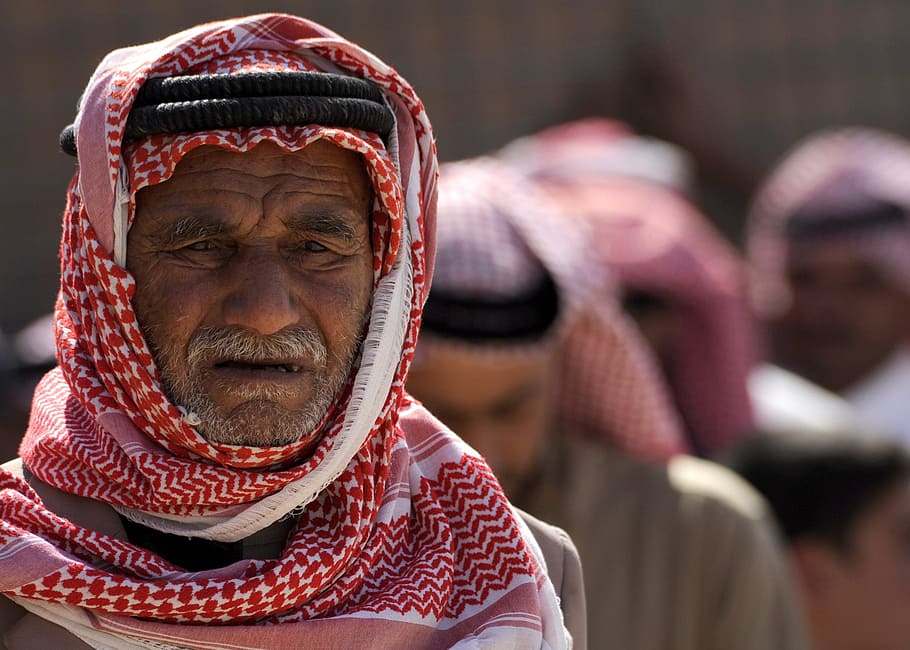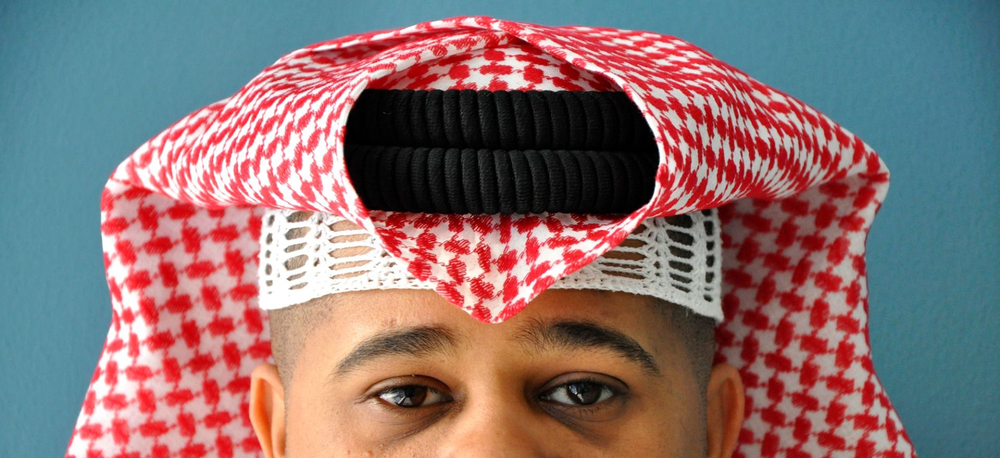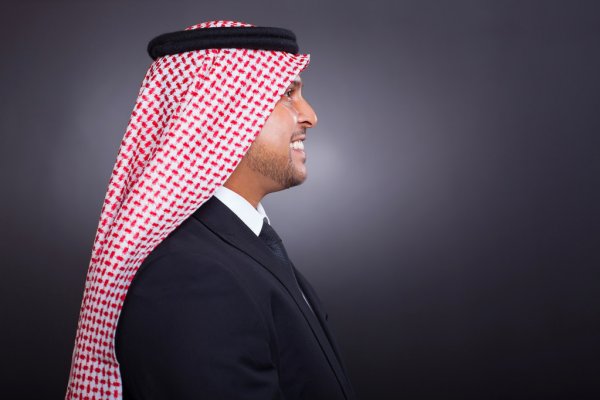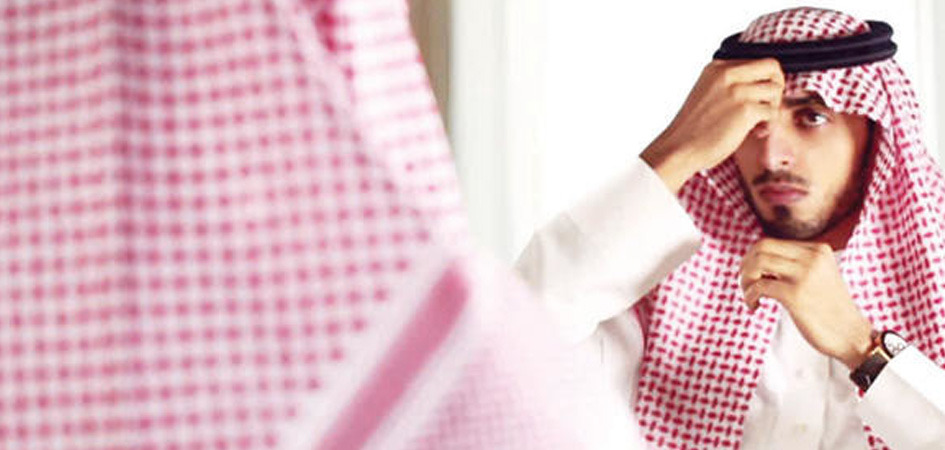In Islam, it is not just women who have to dress modestly; men are also expected to adhere to the codes of their dress and cover the body between the tail and knees. When wearing loose-fit thobes, men should be proper and modest in their attitude. The Ghutra Dubai and Thobe are significant parts of the Islamic community as they encourage the wearer to dress modestly. It also means that the Islamic prayer, read five times daily, is appropriately dressed.
You should be mindful that the locals are very proud of their national clothing if you emigrate to the Middle East (especially the United States of America and Saudi Arabia). Using it as a joke or chuckling as you put it on will be very detrimental, hurting your reputation. Similarly, it would also be viewed as rude to wear stained ghutras. Do this politely and ensure it’s worn appropriately if you want to wear some aspect of the national costume.
Meaning of Ghutra

The rectangular cotton headdress is usually known as a Ghutra or kufiyah. This cord is known as the Agal, which keeps it in place to stop blowing in the wind. The Kufiyah or Ghutra Dubai is a traditional Arab coat-covered piece of a square. Usually, Arabic or Kurdish men wear cotton fabric.
History of the Ghutra
The kufi was used to fix the scarf to the top of the head, and it was typically worn on a Ghutra and locked by a black cord called Agal. Instead of conventional military caps and colonial helms, which looked awkward because of the local climate, this connection was also adopted by UK military men during the British Protectorate over Saudi Arabia. The first images of Arabia from the 19th century confirm that white Ghutra was commonly used, while Agal was not routinely used. Any shots still show various hue versions. Shemagh, an Emirati men’s dress, appeared in the 1950s in Jordan and Iraq, and it is a heavy, red and white managed version.
Today, the facts of the genesis of Ghutra Dubai remain uncertain, although it is clear that it is primarily a mode-based generalization. It is a successful vogue today next to the white ancestral Ghutra.
Now, the central question is: What is Ghutra? And how to wear a Ghutra as an Emirati man’s dress.
What is Ghutra?

Wearing the headscarf as an Emirati man’s dress is a part of Arab culture and is unavoidable. The headscarf is now a sign of national pride. You can find two styles of headscarves in the UAE, known as Ghutra in Arabic. The wearing of turbans in other cultures is similar. One is white, and the other one is chequered red. The tested ones are officially called the shemaghs, while the white ones are called the Ghutra. They are often called the Keffiyahs. But we’ll use Ghutras for both of them for convenience.
Although ghutras like black are other than regulated, only red and white are used in the United Arab Emirates. There is a tradition in which Ghutra Dubai is tied to be as clean and sound as the Arabs. They have numerous formal and informal types. The ghutras are wrapped around their heads for occasional outfits. On the other side, they would wear an Egal for traditional activities.
Ghutra Dubai is now a symbol of Emirate residents, as people of all ages and classes adorn it. Historically, it has been primarily made from cotton. The name of Koufa City, located 170 km from Baghdad, comes from the term “keffiyeh.” The United Arab Emirates has a mild and dry climate regardless of its geographical position. Therefore, the keffiyeh is an item of fashion and vital equipment to shield the harsh environment’s heavy warmth and sand winds.
Why Ghutra?
Men wear it because the desert sun bakes out of your neck that living snot. They are also helpful for sandstorm defense of the eyes/face. The luminous color of the Headdress helps to reflect the heat of the sun and the coolness of the body while it provides complete coverage to the neck and face, helping to prevent sunburn. This clothing is necessary to protect people from heat, sandstorms, and the sudden drop in temperature overnight, as the prevalent desert climates in the Northeast.
Keffiyeh VS Ghutra

In reality, the Emirati Keffiyeh originates from the Arab Bedouin tradition. At the time, this traditional Headdress was said to be an ornament that could discriminate between city residents and rural nomads.
However, the Keffiya is a pure white textile called Ghutra Dubai. Whatever their name, this traditional scarf can be used two ways: fastening the Agal or connecting it to the head. You can contact a specialist in traditional Emirati for more information on the keffiyeh and Ghutra.
Culture and Ghutra Relation
The Ghutra has always been pure white in culture because it doesn’t indicate profiles, photos, or photos. Emirati men’s dress includes cultural innovation, which tends to be the red and white-controlled Headdress, although others dispute this. Due to Middle Eastern peoples’ diverse customs and cultural distinctions, you can see a wide variety of headdresses and clothes. However, despite those variations, both fabric items have an environmental function while still meeting the standards of the Islamic faith.
It is also a big part of Middle Eastern culture that helps to link people with their native country’s customs and traditions. The Headdress is not only a valuable item. For example, the Headdress in Saudi Arabia and the UAE is usually worn with a long white shirt, known as a thobe, extending to the knee. The national dress is made up of the thobe and Ghutra together. Most of the Saudis and Emirates wear their national clothes with pride. Usually, the thobe is clean and well-ironed when added. In Middle Eastern Society, the idea of ‘honor’ will influence the wearer’s image by wearing a thobe with the slightest stain.
Significance of Wearing Colored Ghutra

The UAE’s headdress is similar to that of other GCC nations, but every GCC region has distinctive characteristics. There are no significant social or class differences in the colors used. Today, the preference for Ghutra Dubai or Shimagh in color is mainly concerned with fashion. Men choose red to adjust the behaviors of all white and other colors to suit their colored dishdashas. It is not unusual to see men wearing navy blue dishdashas and matching ghutras, particularly during winter.
In practical terms, however, the light white Sufra, the heavier shemaghs in the cooler winter months, are typically worn in warmer summers. From a geographical standpoint, red Shimaghs are more likely to occur in the KSA than in the UAE and more likely to be seen in a Shaal. However, the rule of thumb is that wearing Agal is formal, so it is often worn at work and in marriages.
How to Wear Ghutra
You can’t do without a decent ghutra; Emirati men dress when you dress up. While a couple of times before you get it right, here are the steps you get started. Here is an easy step-by-step guide to help you wear and tie the Ghutra if you’re interested in a Ghutra.
- In the beginning, halve the Ghutra. Do not half-fold it—instead, fold one end halfway.
- Place the folded half over the top of your head as you place the Ghutra on your head. The half that is unfolded should be on your back.
- Two ends hang over the front of your neck. Offer two turns on both sides to step outwards (not toward your body).
- Pull all ends over your head and neck and cross the two ends behind your shoulders. This gives the Ghutra the bulge at the bottom of the Headdress.
- Now, it’s time to assess your balance. After the two ends are bent and crossed, put them back to the front of your body. Take one end and wrap it on and off the show. Please place it on the back of your lower head in a bag. The second end is what most people are more likely to see.
- Wrap it the same way around. Now, once again, try two lines. Another thing you can do here is to slide the end to create a tail-like look on the edge.
Check the front and back to ensure that it looks good. You will have to do this a few times before you become strong.
Conclusion

It’s much better to wear a formal Ghutra Dubai theme. To do so, first, three steps must be taken as before. But it would help if you put an Egal over an Emirati men’s dress rather than tying it over your head. Due to the Egal weight, the headscarf would remain in place. This is just as simple as knowing how to wear the Ghutra. Read more about the culture and things to do in Dubai.
